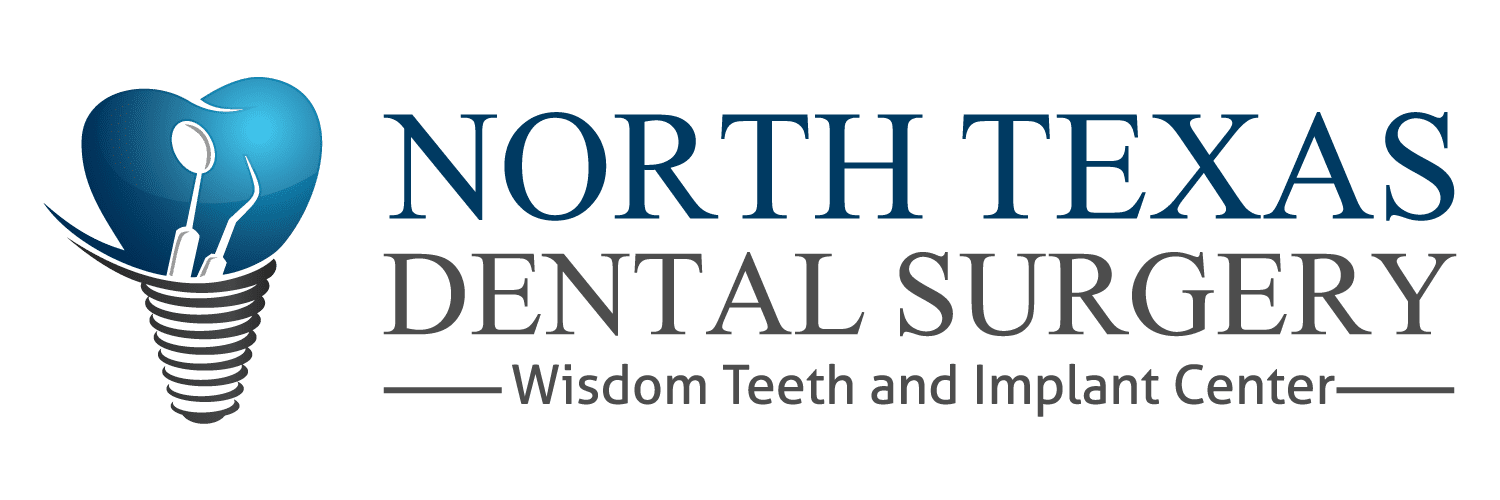GBR
Patients requiring dental implants may face challenges due to bone loss. A number of conditions lead to reduced bone density. For example, lost teeth often cause bone loss, especially when tooth loss occured due to periodontal disease. When the bone shrinks or softens, it provides inadequate support for dental implants. In the past, patients suffering this kind of bone loss were not candidates for dental implants. Modern technologies, however, allow bone augmentation and even regeneration, making it possible for these patients to receive dental implants.
Before Surgery
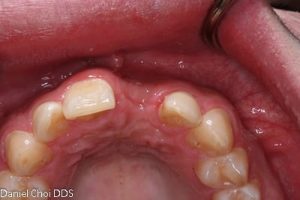
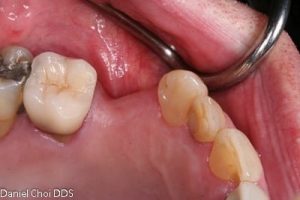
After Surgery
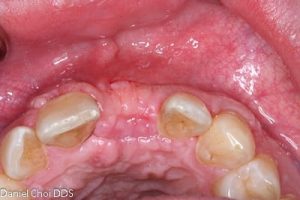
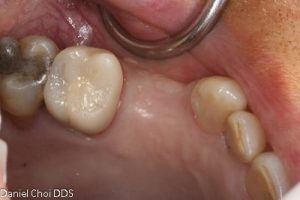
What Is Ridge Augmentation?
Following tooth loss, trauma or extraction, your periodontist may perform a ridge augmentation procedure. This procedure rebuilds the alveolar ridge, the bone surrounding tooth roots. A ridge augmentation procedure rebuilds the bone in preparation for a dental implant. The patient may also choose this procedure for cosmetic reasons. A second option to treat a damaged alveolar ridge is guided bone regeneration (GBR).
What Is Guided Bone Regeneration?
Sometimes called guided tissue regeneration (GTR), guided bone regeneration (GBR) uses special membranes under the gum to protect bone grafts and encourage regrowth. These membranes also encourage bone growth in other ways. For instance, some tissue growth interferes with bone growth; GBR prevents these tissues from growing by using a metal mesh.
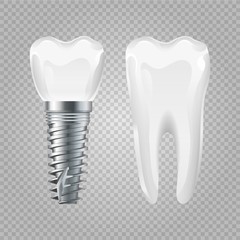
The Procedure
A ridge augmentation and GBR procedure may take place immediately following a tooth extraction, depending on your unique needs. If it takes place after tooth loss, your periodontist administers anesthetic and then thoroughly cleans the gum pockets before making an incision in the gum tissue.
Your doctor inserts the membrane between the soft tissue and the bone pocket. This prevents faster-growing soft tissue from interfering with the slower growth of bone tissue, allowing it time to regenerate. Your periodontist may also apply biologics to speed regeneration and a metal mesh encasing the site. Finally, your doctor closes the incision. Once healing is complete, the doctor schedules your dental implants.
Recovery
After your procedure, your doctor prescribes antibiotics and over the counter medication to manage pain. Also post-operative instructions regarding oral hygiene will be provided; follow these instructions carefully. Apply ice to the area to minimize bruising and swelling, and limit physical activity for the first few days following surgery. Soft diet is imperative to ensure proper healing during the first couple of weeks.
The Periodontal Specialist
North Texas Dental Surgery in McKinney, Plano and Grapevine offers the highest quality of care to our patients. We will always be completely transparent to you from treatment to price. Never feel over charged again, with our most competitive cash prices in Texas. We are so confident that once you meet us you’ll want to stay, that we offer free consultations and 3D scans. A $400 value for absolutely free. Why not come in today?
